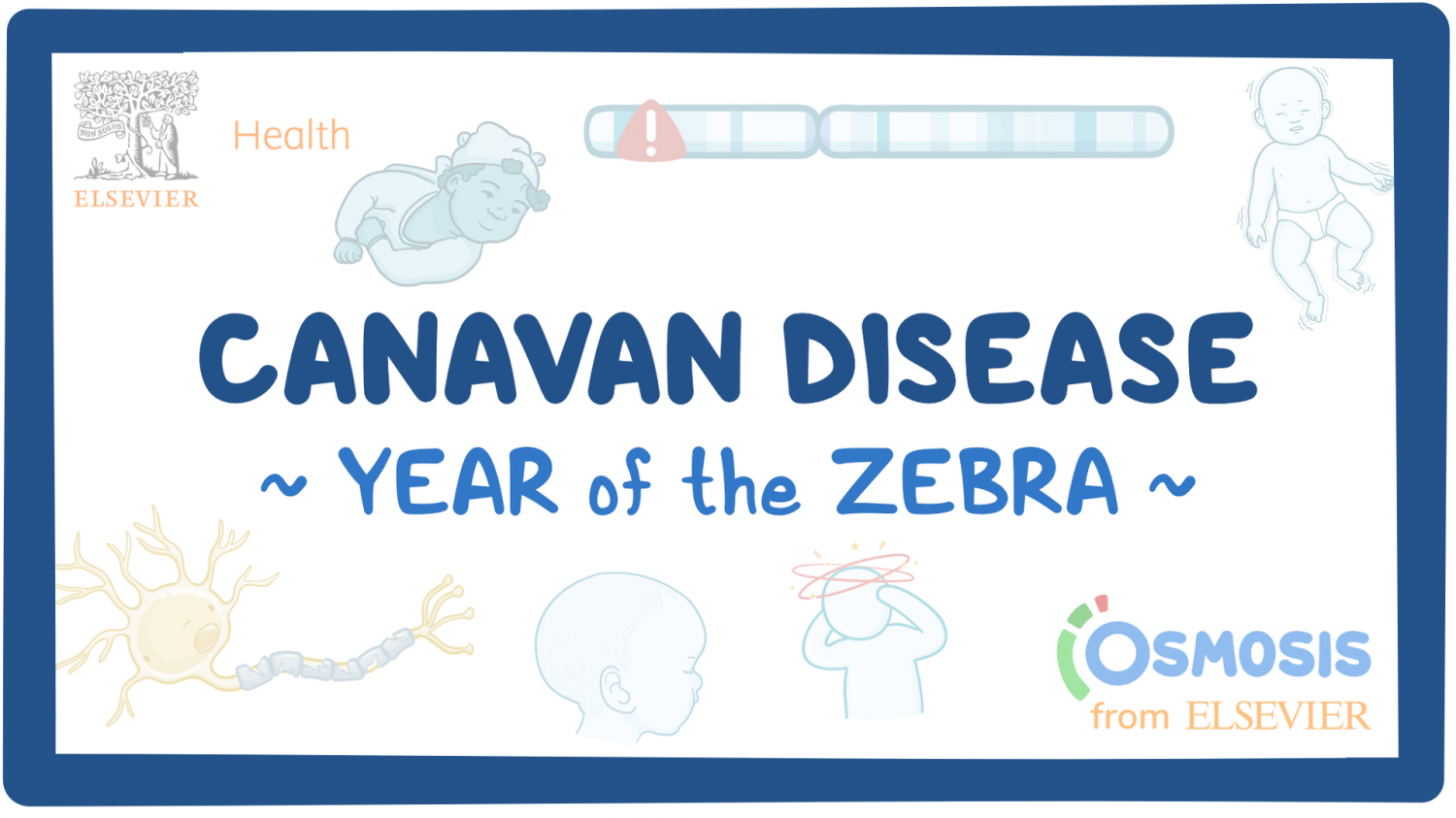
Rare Disease Education: Canavan Disease
Editor: Kelsey LaFayette, DNP, RN, FNP-C
"When you hear hoofbeats, think of horses, not zebras,” is a common saying in medical education that means you should think of common conditions first, instead of rare ones, in making a diagnosis. “Rare” is a relative term though and about 7,000 rare, or "zebra," conditions affect more than 350 million individuals worldwide. Although these conditions collectively affect an enormous number of people, each of these conditions individually is rare enough that it can be difficult to secure the resources to study them and to develop treatments and cures. Likewise, awareness of rare conditions may be low and health care professionals may not be familiar with their signs and symptoms making it more difficult to reach a correct diagnosis and provide effective treatments.
To increase knowledge about rare conditions, Osmosis and the National Organization for Rare Diseases (NORD) have collaborated on an initiative to bring education and awareness to the public. We are excited to be a part of this initiative because we believe everyone deserves quality health care, no matter how rare their condition.
Zebra of the Week: Canavan Disease
From cars to airplanes, machinery must be built and maintained with specialized tools to function properly. Any anticipated expansions would be a much bigger endeavor. Although incomparable to inanimate objects, the human brain also needs a whole host of processes to maintain it. To go even further, the intense periods of brain growth in children add a whole level of complexity to the equation.
Canavan disease is a rare genetic neurological disorder characterized by the spongy degeneration of the white matter in the brain. It belongs to a group of disorders known as the leukodystrophies. Each type of leukodystrophy is caused by an abnormality of a specific gene that results in the abnormal development of one of at least 10 different chemicals that make up the white matter of the brain. In Canavan disease, the ASPA gene which metabolizes a substance called N-acetylaspartic acid (NAA) is affected, leading to the accumulation of the latter and all the ensuing effects.
The disorder usually becomes apparent between 3 and 6 months of age and the initial symptoms usually include extremely poor head control, an abnormally large head, and severely diminished muscle tone (hypotonia) resulting in “floppiness.” Affected infants may be generally unresponsive, lethargic, or irritable. Some infants may experience difficulty swallowing (dysphagia), which contributes to feeding difficulties.
It affects all ethnic groups but occurs with greater frequency in individuals of Ashkenazi Jewish descent. The overall incidence of Canavan disease in the general population is unknown.
To learn more about the diagnosis and treatment of Canavan disease, watch the dedicated Osmosis video on YouTube and Osmosis.org.
Meet Jacob & Jordana
Jacob was diagnosed with Canavan Disease at only six months of age. At the time of diagnosis, his mother Jordana describes a feeling of loneliness and a sense of loss at how to take care of him. She describes Jacob as being “stuck in his body”, not being able to express himself. Although Jacob unfortunately passed, Jordana keeps his memory alive by helping others with their rare disease journey. Watch their touching story above.
Organization Taking Strides
The National Tay-Sachs & Allied Diseases Association (NTSAD) was founded in 1957, initially focusing on tackling Tay-Sachs disease, another fatal genetic disorder. Over time, the scope of the association expanded to include other closely related genetic diseases, such as Canavan disease. In the early days, families affected by these disorders often felt isolated and had limited access to information and support.
NTSAD emerged as a pioneering organization dedicated to providing informational resources, fostering community, and funding critical research, including clinical trials, to battle these diseases. Among its many activities, NTSAD facilitates carrier testing for individuals, especially those in high-risk populations, to try to inform and prevent. They organize an Annual Family Conference, which gathers families, researchers, and medical professionals and serves as a platform for the exchange of the latest information, emotional support, and networking. Learn how you can contribute by visiting their website above.
